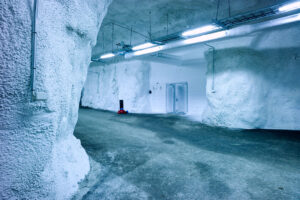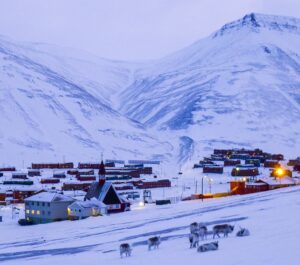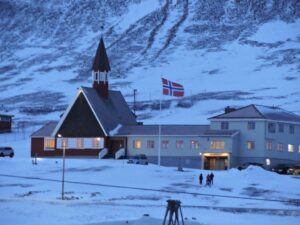Svalbard, located north of the Arctic Circle, is one of the coldest places on Earth. Is also known as “People Living Life on the Edge”. With freezing temperatures and icy landscapes, it offers the perfect setting for an unforgettable arctic adventure. Whether you’re interested in exploring the mysterious Jan Mayen Island, embarking on sea kayaking expeditions, or experiencing the ultimate Arctic voyage on the Ultramarine Polar Adventure Ship, Svalbard has something extraordinary to offer to every adventure seeker.
History of Coldest Svalbard Iceland
The Svalbard the polar archipelago, is fascinating and spans several centuries. Here are some key points:
- Discovery and Early Whaling:
- Svalbard was first discovered by Dutch explorer Willem Barentsz in 1596.
- Whaling for bowhead whales began in 1611, with English and Dutch companies dominating the industry.
- During this time, there was no clear agreement on sovereignty over the islands.
- Whaling Stations and Exploration:
- Whaling stations, including the largest one called Smeerenburg, were established during the 17th century.
- Pomors (Russian hunters) and Norwegians were involved in hunting and exploration.
- Scientific expeditions started in the 18th century, focusing on finding new whaling grounds and studying the region.
- Mining and Sovereignty:
- Sustainable coal mining began in 1906, leading to the establishment of settlements like Longyearbyen.
- In 1925, the Svalbard Treaty granted Norway sovereignty over the archipelago, while allowing other signatories the right to mine.
- The name changed from the Spitsbergen Archipelago to Svalbard.
- World Wars and Cold War:
- During World War II, settlements were evacuated and bombed by the Kriegsmarine but were rebuilt afterward.
- The Cold War saw tensions between Norway and the Soviet Union, especially regarding airport construction.
- Modern Developments:
- Normalization of Longyearbyen turned it into a regular community.
- Russian settlements like Grumant and Pyramiden closed down.
- Tourism has become a significant part of Longyearbyen’s economy.
- Norse Exploration Hypothesis:
Svalbard’s history is a blend of exploration, whaling, mining, and scientific endeavors, making it a unique and captivating part of the Arctic region.
Key Takeaways:
The seed bank is buried so deep in its Arctic location that, in the event of a power outage, it would last for 200 years. According to Ross Andersen in The Atlantic, the purpose of the global network of seed banks, which revolves around Svalbard, is to “collect and store hundreds of thousands of seed varieties, encompassing nearly every plant ever cultivated by humans, going back to the dawn of agriculture.”

Millions of seeds, representing over 860,000 significant crop varieties from throughout the globe, are preserved by it as a last line of defense against calamities brought on by climate change, conflict, and natural disasters.
 Around the world, local seed banks like ICARDA are a crucial component of food security. In the unlikely event that local crops are destroyed by disease or bad weather, they supply plant varieties to local farmers and scientists. Svalbard is buried so deeply in the Arctic that it might last 200 years without power.
Around the world, local seed banks like ICARDA are a crucial component of food security. In the unlikely event that local crops are destroyed by disease or bad weather, they supply plant varieties to local farmers and scientists. Svalbard is buried so deeply in the Arctic that it might last 200 years without power.
 Located 500 feet inside a mountain on a secluded island between mainland Norway and the North Pole, the Svalbard Global Seed Vault was created to aid humanity in its hour of greatest need.
Located 500 feet inside a mountain on a secluded island between mainland Norway and the North Pole, the Svalbard Global Seed Vault was created to aid humanity in its hour of greatest need.
Weather Conditions in Svalbard
Svalbard, located in the Arctic, is known for its extreme weather conditions and freezing temperatures. Winter temperatures on the island can range from -4°C to +5°C (24.8°F to 41°F), creating a frigid environment for adventurers. The region experiences regular snowfall, with rates varying throughout the season. The icy landscapes of Svalbard provide a unique and breathtaking backdrop for arctic exploration.

Explore the captivating beauty of Svalbard’s Arctic climate and embrace the challenges and rewards that come with the extreme weather conditions. Embark on an unforgettable journey through the frozen landscapes, where each step
takes you deeper into the heart of this remarkable Arctic oasis.
“The Arctic weather in Svalbard is truly awe-inspiring. The freezing temperatures and abundant snowfall create a pristine winter wonderland like no other. It’s a paradise for those seeking adventure in the harshest conditions.”
Whether you’re a seasoned explorer or a first-time adventurer, Svalbard’s weather conditions provide an opportunity to test your limits and experience the raw power of nature. Bundle up in warm layers, prepare for subzero temperatures, and set foot in a world where freezing winds and breathtaking landscapes await.
Popular tourist attractions in Longyearbyen
Longyearbyen, located in the Svalbard archipelago, offers unique attractions for visitors. Here are some popular ones:
 Svalbard Museum:
Svalbard Museum:- Explore the history, culture, and natural environment of Svalbard.
- Learn about early whaling, mining, and Arctic expeditions.
- Address: Vei 231-1 Forskningsparken Svalbard Science Park/The University Centre in Svalbard.
- Gruve 3 (Mine 3):
- Step into the history of Longyearbyen’s coal mining industry.
- Experience the life of a miner and explore equipment and machinery from Gruve 3’s days of production.
- Address: Contact them at 79 02 52 00.
- North Pole Expedition Museum:
- Discover fascinating information about Arctic expeditions and explorers.
- Learn about the challenges faced by those who ventured into the icy wilderness.
- Address: Located in Longyearbyen.
- Svalbard Brewery:
- Enjoy a taste of local beer at Svalbard’s northernmost brewery.
- Try unique brews inspired by the Arctic environment.
- Address: Open now.
 Svalbard Kirke (Svalbard Church):
Svalbard Kirke (Svalbard Church):- Visit the charming church in Longyearbyen.
- Admire its architecture and peaceful surroundings.
- Address: Located in Longyearbyen.
Remember to check the opening hours and availability before planning your visit. Longyearbyen’s mix of history, natural beauty, and Arctic adventure awaits! 🌟🏔️
Exploring Jan Mayen Island
Jan Mayen Island, located north of Svalbard, is a fascinating and enigmatic destination waiting to be discovered. One of its most notable features is the towering Beerenberg volcano, reaching an impressive 7470 ft (2277 m) in height. The rugged cliffs and untouched landscapes of Jan Mayen offer visitors a truly spectacular sight.
Designated as an Important Bird Area, Jan Mayen is a haven for various bird species. Colonies of northern fulmars, little auks, glaucous gulls, kittiwakes, and black and Brunnich’s guillemots thrive on the island, creating a vibrant and diverse wildlife ecosystem.
“Jan Mayen Island provides a unique opportunity to witness these magnificent bird species up close and personal. Its protected status ensures the preservation of their natural habitats, allowing visitors to appreciate the beauty of Jan Mayen’s wildlife,” said wildlife expert John Smith.
Exploring the bay of Kvalrossbukta is another highlight of a visit to Jan Mayen. This bay is home to the remnants of a 17th-century whaling station, offering a glimpse into the island’s history and the whaling industry of the past.
For those curious about the local culture, a visit to Olonkinbyen, the only settlement on Jan Mayen, provides insight into polar research and meteorological observations. This small outpost serves as a base for the Norwegian military and the Norwegian Meteorological Institute personnel.
Embarking on an adventure to Jan Mayen Island guarantees a truly unforgettable experience, immersing visitors in its breathtaking landscapes, diverse wildlife, and intriguing history.
Sea Kayaking Adventures in Svalbard and Jan Mayen
Experience the thrill of sea kayaking in the breathtaking landscapes of Svalbard and Jan Mayen. Paddle through the icy waters and discover the wonders of the Arctic up close. With each stroke, you’ll have the opportunity to spot incredible wildlife, including playful penguins, majestic seals, and awe-inspiring whales.
In Svalbard, embark on a coastal kayaking expedition, marveling at the towering icebergs and mighty glaciers that dominate the horizon. Feel the cool breeze as you navigate through the pristine waters, surrounded by the untouched beauty of this Arctic paradise.
Head to Jan Mayen and get ready for an adventure unlike any other. Explore the rugged cliffs and hidden bays as you search for wildlife colonies that call this remote island home. Guided by experienced instructors, you’ll paddle in small groups, allowing for a more intimate and immersive experience.
These kayak excursions offer a unique perspective on the stunning Arctic landscapes. Feel the connection to nature as you glide through the calm waters and soak in the serenity of the Arctic wilderness. Whether you’re a seasoned paddler or new to kayaking, these adventures cater to all skill levels, ensuring an unforgettable experience for everyone.
Climate Considerations for Sea Kayaking in the Arctic
When embarking on a sea kayaking adventure in the Arctic, it is essential to take climate conditions into account. The polar regions, including Svalbard and Jan Mayen, boast a unique Arctic climate that can greatly impact kayaking experiences.
The temperatures in the Arctic can be quite cool, even in the summer months, ranging from -4°C to +5°C (24.8°F to 41°F). This means that you will need to dress warmly and be prepared for the cold conditions. Additionally, the water temperatures in the Arctic are close to freezing, so it is crucial to wear appropriate protective gear to stay safe and comfortable during your kayaking excursion.
Another factor to consider is the weather. The Arctic is known for its unpredictable weather patterns, and strong winds can be a common occurrence. These weather conditions can create challenging paddling conditions, requiring kayakers to have the necessary skills and experience to navigate through rough waters safely. It’s essential to be prepared for different weather scenarios and plan your kayaking trips accordingly.
Compared to more temperate regions like Scotland and Iceland, where water temperatures are around 12°C (53.6°F), the Arctic provides a unique and exhilarating kayaking experience. However, it requires a higher level of physical fitness and endurance. Kayakers should be prepared to paddle for up to three hours, as well as possess the necessary strength and stamina to handle the demanding conditions.
Regular exercise and fitness training before your Arctic kayaking adventure are highly recommended. By improving your physical fitness, you’ll be better equipped to enjoy the experience and fully embrace the stunning Arctic landscapes. Remember, safety should always be a top priority, so it’s vital to follow all safety guidelines and instructions provided by professional guides and instructors before setting out on your journey.
“The Arctic climate provides a challenging yet rewarding environment for sea kayaking. However, it’s important to understand the unique climate conditions in this polar region to ensure a safe and enjoyable adventure.”
Are there any festivals or events in Svalbard?
Svalbard hosts a variety of exciting festivals and events throughout the year. Whether you’re interested in music, culture, or unique Arctic experiences, there’s something for everyone. Here are some notable events:
- Dark Season Blues Festival (October 26 – 29):
- As the daylight begins to wane, this blues festival marks the transition into the dark season.
- Enjoy live music performances in Longyearbyen.
- PolarJazz Festival (Early February):
- A celebration of jazz music in the Arctic.
- Attend concerts and enjoy the cozy atmosphere.
- Solfestuka (Sun Festival Week) (First week of March):
- A traditional celebration to welcome back the sun after the polar night.
- Various cultural happenings, including food and drink traditions.
- Taste Svalbard (October 4 – 8):
- The world’s northernmost culinary festival.
- Explore Arctic cuisine and local food traditions.
- Arctic Chamber Music Festival (February 22 – 25):
- Experience classical music in the raw and wild Arctic environment.
- World-class musicians perform in a warm and cozy setting.
- Longyearbyen Pride (August 24 – 27):
- A celebration of diversity and inclusivity.
- All hearts are welcome to join the festivities.
- Christmas in Longyearbyen:
- Svalbard offers a magical Christmas atmosphere.
- Perhaps the best place in the world to experience the ultimate holiday spirit.
Remember to check the specific dates and plan your visit accordingly. Svalbard’s events add a special touch to your Arctic adventure! 🎶🌞🎄
What is the best time to visit Svalbard?
The best time to visit Svalbard depends on your preferences and what you’d like to experience. Here are some considerations for different seasons:
- Summer (June to August):
- Midnight Sun: During this period, Svalbard experiences the midnight sun, where the sun doesn’t set. It’s a unique experience to have 24 hours of daylight.
- Wildlife: Summer is the best time for wildlife viewing. You can spot polar bears, Arctic foxes, reindeer, and various bird species.
- Hiking and Exploration: The warmer temperatures allow for hiking, boat trips, and exploring the stunning landscapes.
- Flora: Witness the brief but vibrant Arctic flora in bloom.
- Autumn (September to October):
- Northern Lights: As the nights get darker, you have a chance to see the Aurora Borealis (Northern Lights).
- Less Crowded: Fewer tourists visit during this time, providing a quieter experience.
- Changing Colors: Enjoy the beautiful fall colors as the tundra changes.
- Winter (November to February):
- Polar Night: Svalbard experiences the polar night, where the sun doesn’t rise. It’s a great time for stargazing and Northern Lights.
- Dog Sledding and Snowmobiling: Engage in thrilling activities like dog sledding and snowmobiling.
- Extreme Cold: Be prepared for extremely cold temperatures.
- Spring (March to May):
- Increasing Daylight: As spring arrives, the days get longer, and you’ll experience the transition from polar night to midnight sun.
- Snow and Ice: Witness the pristine snow and ice landscapes.
- Seal Pups: Spring is the time when seal pups are born, and you might spot them on the ice.
Remember that Svalbard’s weather can be unpredictable, so dress in layers and be prepared for sudden changes. Choose the season that aligns with your interests and desired activities! 🌞🌙❄️
How do I get to Svalbard from Norway?
You have a few options for traveling to Svalbard from mainland Norway:
- Flights:
- Both Norwegian and SAS offer flights to Longyearbyen, the main settlement in Svalbard.
- Flights from Oslo take about 3 hours, while flights from Tromsø take approximately 1.5 hours.
- Due to Svalbard being outside the Schengen area, identity control is performed for all guests traveling to and from Svalbard, including Norwegians. Make sure to bring your passport or national ID-card.
- Sea Travel:
- While there are no regular ferry services between mainland Norway and Svalbard, you can choose to travel by ship or cruise.
- Some cruise ships operate between mainland Norway and Svalbard, offering a unique way to explore the Arctic region.
Remember to check flight availability and travel regulations before planning your trip. Whether by air or sea, Svalbard promises an unforgettable adventure! 🛫🏔️
The Ultimate Arctic Voyage: Ultramarine Polar Adventure Ship
The Ultimate Arctic Voyage takes you on an extraordinary journey aboard the Ultramarine Polar Adventure Ship, specially designed for Arctic exploration. Embark on an Arctic expedition cruise like no other, where luxury and adventure converge in the pristine wilderness of the polar regions.
Equipped with two twin-engine helicopters, the Ultramarine offers unparalleled access to remote areas, allowing you to embark on thrilling adventures and experience the Arctic in a truly unique way. Whether it’s soaring above awe-inspiring glaciers or exploring hidden corners of the frozen wilderness, this once-in-a-lifetime journey will leave you in awe of nature’s beauty.
Step aboard the Ultramarine and be captivated by its spacious suites, designed for your comfort and relaxation. From breathtaking public spaces to more outdoor wildlife viewing spaces than other ships in its class, every corner of the Polar Adventure Ship is thoughtfully designed to enhance your Arctic expedition cruise experience.
Unparalleled Luxury and Sustainability
Not only does the Ultramarine offer luxury Arctic voyages, but it also prioritizes sustainability. The ship features sustainability features that exceed industry standards, allowing you to explore the polar regions with minimal impact on the environment. Immerse yourself in the beauty of the Arctic while knowing that your journey is contributing to conservation efforts.
Choose Your Cabin Class
The Ultramarine offers a range of cabin classes to suit your preferences. From the Solo Panorama for solo travelers to the Owner’s Suite for a truly indulgent experience, each cabin class provides a comfortable retreat after a day of Arctic exploration. Whether you choose the Explorer Triple, Explorer Suite, Balcony Suite, Deluxe Balcony Suite, Terrace Suite, Penthouse Suite, or the exclusive Owner’s Suite, you’ll find yourself surrounded by luxury and immersed in the breathtaking landscapes of the Arctic.
Have you brought: New Meta Smart Glasses Enhanced: 2024 Cutting-Edge AR Tech

 Svalbard Museum:
Svalbard Museum: Svalbard Kirke (Svalbard Church):
Svalbard Kirke (Svalbard Church):